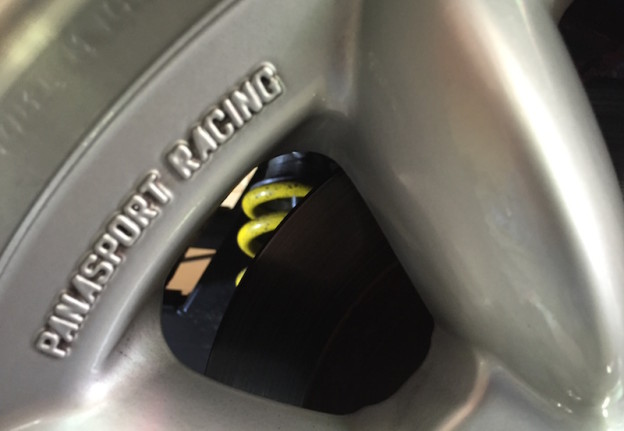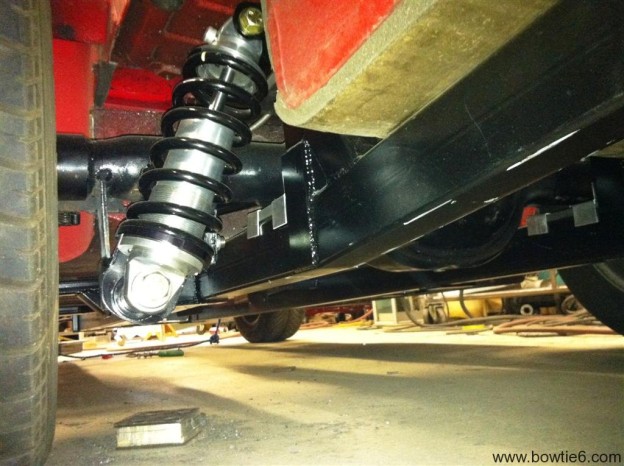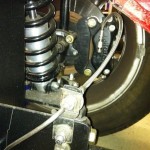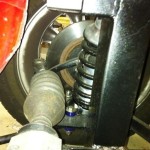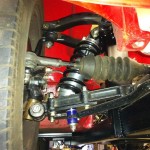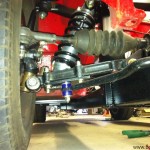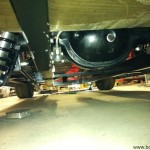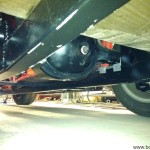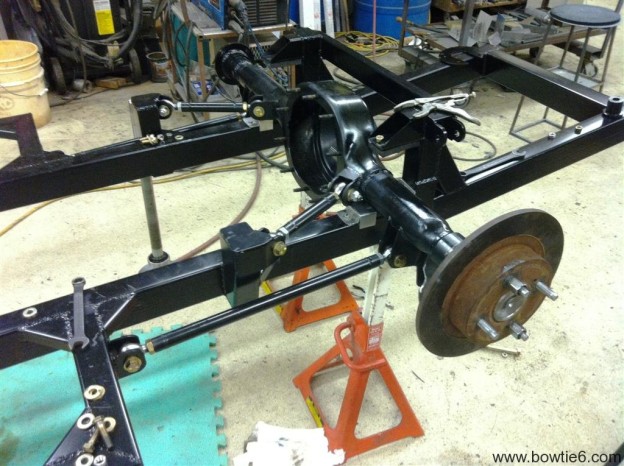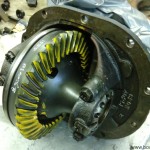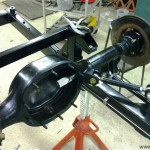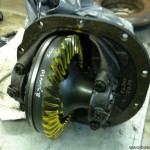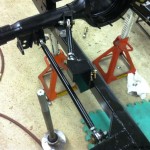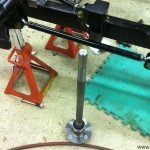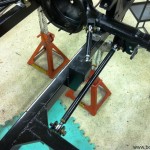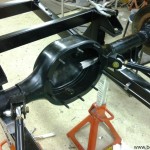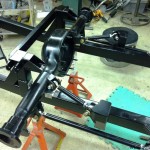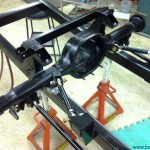I’ve spent some time lately tweaking the coilovers in bowtie6. Part of the fun of doing a conversion like this is debugging issues and improving the original design. This is not because we didn’t do our homework. Instead, once you get things running certain assumptions turn out different once exposed to the “real world” experience. The coilovers are no exception.
Ever since I started talking about coilovers on bowtie6 both here in the blog and at car shows, I’ve been asked what coil rates I have used. Folks ask me this expecting a straight answer but unfortunately there is no such thing! This is a trial and error process that is highly dependent on factors such as suspension travel, weight distribution and mounting angles of the coilovers – among others.
So when we put things on paper we factored fore and aft weight distribution and a general notion of the coilover mounting angles. The best placement for a coilover is to mount them straight up. At this angle the coil rating is 100%; the more tilted the less efficient the coil works. However, it is very hard to get the coils straight up especially when you have “A” arms or the body in the way. So this becomes a bit of a compromise.
As the suspension settled, I started noticing the front tyres scrubbing on the inside of the front fenders when doing some heavy cornering or when the car settled on a bump under heavy compression. Not good. So what to do? There are several options…
Stiffer Springs
Coils come in a variety of ratings, such as 400lb coils for example. What this means is that it takes 400lbs to compress the coil an inch. This illustrates what I mentioned above about mounting efficiency. The 400lb rating is with the coilover mounted straight up. With the coilover mounted at a 20 degree angle, you would need a 454lb coil to give you the 400lb rating.
So just run stiffer springs, right? Well, not really. One can make the suspension too stiff and when that happens the suspension does not react quick enough to undulations in the road surface. This can yield to poor handling.
Larger Swaybar
A larger swaybar can be used too. However one has to be careful with this because with a stiffer swaybar the care will also react in unexpected ways under hard cornering such as oversteer or understeer depending whether a rear sway bar is used. Careful matching is critical here.
Raising the Body
Another idea is to unbolt the body from the frame, make shims and bolt things back up. Easy on paper but hard to carry out. This could take a bit of time to figure out Furthermore, a disadvantage to this approach is that the center of gravity will be affected and once again handling takes a hit.
Now What?
I am not an expert in this by a long sight, but after talking this over with several folks that know much more about this than I do, we decided on a stiffer set of coils (but not too stiff!). I placed an order and a few days later (thanks to UPS) the stiffer coils arrived. After opening the box and making a few measurements things got really interesting…
Turns out the coilover vendor from whom I bought the coilovers a year before, made a huge mistake. For some reason they screwed up and sent me different length coilovers. The rears are longer by 0.6 inches. When my cousin Jim fabricated the frame and designed the mounting points, the calculations were based on the longer of the two pairs. Thinking they were both the same all looked great on paper. However, in reality the front ended up short by that 0.6 inch.
At any rate, we ended up upgrading the front coils with the new stiffer ones. What a difference. The tire scrub has been solved while retaining good handling. Another “bug” solved. Moral of the story? just because a vender ships something you have ordered and it seems to be “correct” do yourself a favor: measure and make sure all is correct and up to spec. Especially on parts that might be not used for quite some time.
